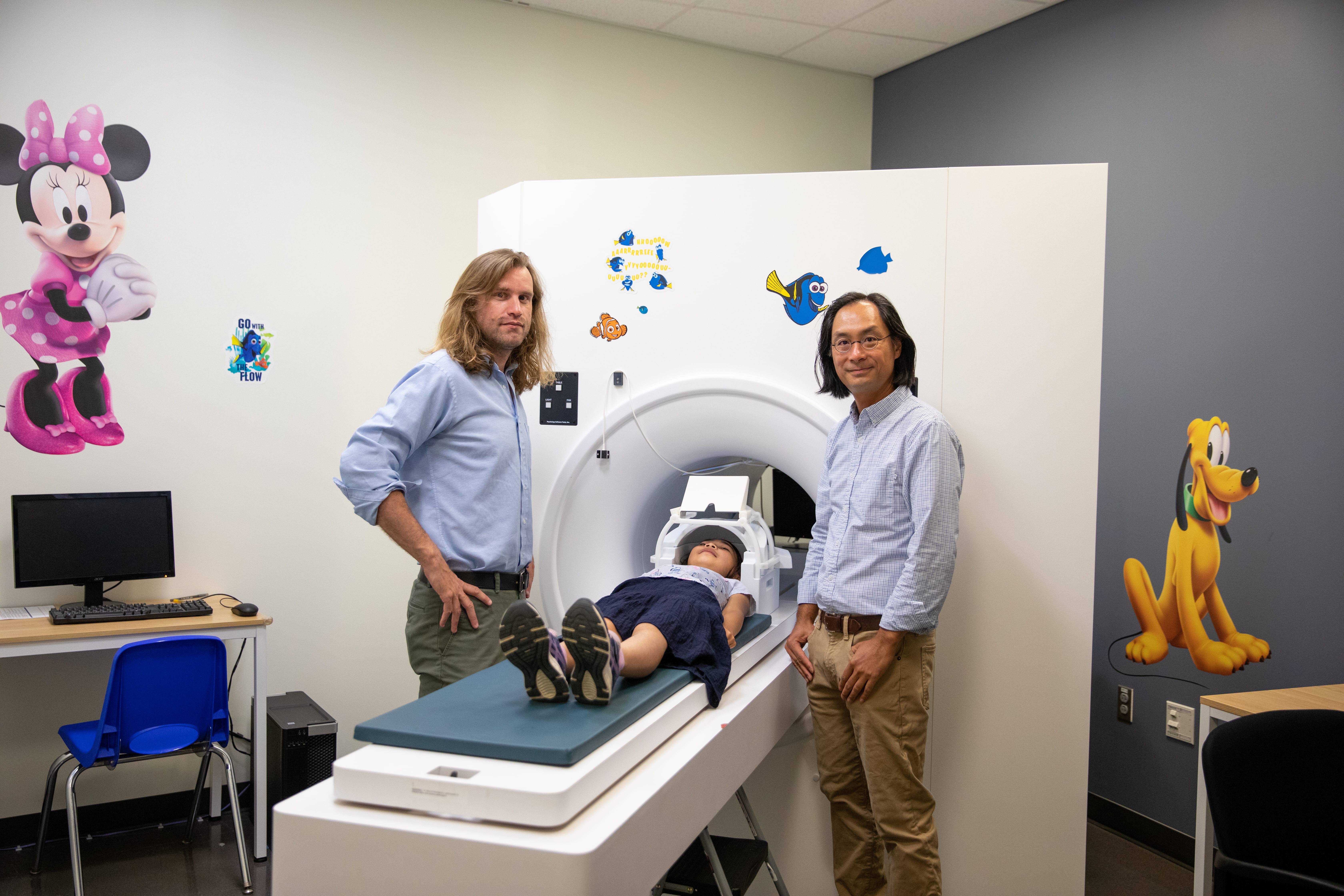Labs

Neural Subtypes of Developmental Stuttering
In collaboration with Dr. Soo Eun Chang’s team at the University of Michigan, we use neuroimaging techniques to study brain structural development in children who stutter as young as six years old. We try to identify structural changes associated with stuttering onset and stuttering persistence in school-age and older children, respectively.
Brain Activity During Continuous Speech Production
Moments of stuttering typically occur during the production of continuous speech. However, studying brain activity during continuous speech production is challenging because speech-related head movements may adversely affect the data quality of many neuroimaging techniques. To overcome this challenge, we separate noise and signals associated with neuronal activity in fMRI based on their distinct spatial patterns in the brain. Using this fMRI de-noising technique, we are able to study cortical and subcortical activity in children and adults who stutter and fluent speakers during continuous speech production.
Effects of Stuttering Mutations
Developmental stuttering has a strong genetic underpinning. Researchers have begun to identify mutations associated with stuttering and engineered knock-in mice with those mutations. In this project, we study the effects of gnptab mutations on mouse vocalization behaviors and brain development in different stages of life.
Origins of EEG Signatures Associated with Disfluent Speech
Anomalous brain waves measured by EEG have been associated with dysfluent speech in adults who stutter. However, the locations in which these anomalous brain waves originate are not known. To answer this question, we will record EEG simultaneously with fMRI to localize brain activity associated with anomalous brain waves.

Remote Study of Speech
Stuttering and cluttering are distinct fluency disorders, but differential diagnosis can be challenging because both disorders often share overlapping symptoms. The objective of this project is to collect acoustic speech data from people who stutter and/or clutter to explore if, and to what extent, aspects of speaking help to accurately distinguish these two populations.
To achieve this objective, we will visually and auditorily record people who stutter and/or clutter, as well as people without fluency disorders, during various speaking tasks conducted entirely remotely (i.e., remote video conferencing). The outcome of this project can potentially advance our understanding how the symptoms of stuttering and cluttering differ, which is a necessary step to develop new treatment and prognosis tools for these disorders in the future.
We are currently recruiting participants, aged 8 to 65, for this study. Please contact us at stutteringproject@udel.edu.
fMRI/EEG Study of Speech
The objective of this project is to explore the relationship between time-sensitive EEG and spatially-sensitive fMRI measures of brain activity before, during, and after speaking in adults with and without fluency disorders.
Neural Basis of Social Behavior and Stuttering Mutation
Developmental stuttering has a strong genetic underpinning. Researchers have begun to identify mutations associated with stuttering and engineered knock-in mice with those mutations. In this project, we work with Neunuebel Neuroscience Lab to study the effects of gnptab mutations on mouse vocalization behaviors and brain development in different stages of life.

Stuttering and Microbiology
We collaborate with Dutta Lab to study the cellular mechanisms of stuttering and how stuttering mutations affect brain circuits supporting speech production. We address these questions by employing interdisciplinary approaches including molecular biology and high-field MRI

